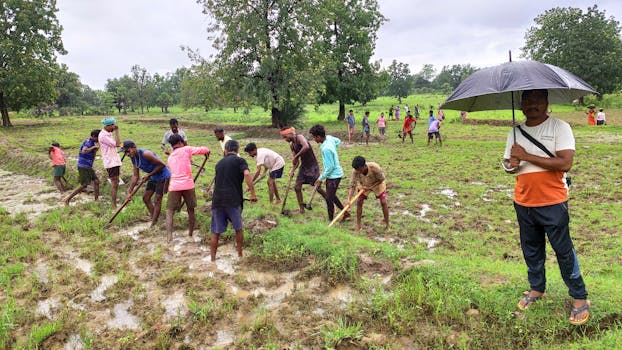
Odisha Floods 2024: Thousands Evacuated as Balasore and Mayurbhanj Districts Submerge
Heavy rainfall continues to batter Odisha, leading to severe flooding and widespread disruption across the state. The situation is particularly critical in the northern districts of Balasore and Mayurbhanj, where thousands have been evacuated as floodwaters engulf homes and villages. This latest deluge follows weeks of intense monsoon activity, exceeding expected rainfall levels and causing significant damage to infrastructure and agriculture. The disaster has prompted a major relief and rescue operation, highlighting the urgent need for improved flood management strategies in the region.
Devastating Impact of the Odisha Rains: Balasore and Mayurbhanj Bear the Brunt
The relentless downpour has pushed rivers like the Budhabalanga and Subarnarekha beyond their capacity, inundating vast swathes of land in Balasore and Mayurbhanj. Reports suggest that several villages are completely submerged, with residents forced to seek refuge on higher ground or in temporary relief camps. The Odisha government has launched a large-scale evacuation effort, utilizing boats and helicopters to reach those stranded in affected areas. The state’s disaster management authority is working tirelessly to provide essential supplies such as food, water, and medical aid to those affected.
Evacuation Efforts and Relief Measures
- Large-scale evacuations: Thousands of people have been moved to safer locations, with relief camps set up across the affected districts.
- Rescue operations underway: The Odisha Disaster Rapid Action Force (ODRAF) and the National Disaster Response Force (NDRF) are actively engaged in rescue and relief operations.
- Supply distribution: Essential supplies including food, drinking water, and medicines are being distributed to those in need.
- Medical assistance: Medical teams are deployed to provide immediate healthcare and address potential health risks.
- Damage assessment underway: Teams are assessing the extent of damage to infrastructure, agriculture, and property.
Flood Warning and Early Alert Systems: Are They Enough?
The current flooding raises serious questions about the effectiveness of existing flood warning and early alert systems in Odisha. While the government has implemented various measures, the scale and intensity of the current flooding suggest a need for further improvements. Experts are calling for a comprehensive review of the systems, including enhanced forecasting capabilities, improved communication strategies, and community-based early warning mechanisms. The ability to accurately predict rainfall patterns and disseminate timely warnings to vulnerable communities is crucial in minimizing the impact of future flood events.
Challenges Faced in Relief Efforts
Despite the significant efforts by the authorities, several challenges hinder effective relief operations:
- Accessibility: Reaching remote and flooded villages remains a major hurdle.
- Infrastructure damage: Damaged roads and bridges hamper the movement of relief supplies and rescue teams.
- Communication disruptions: Power outages and communication disruptions hinder the coordination of relief efforts.
- Lack of awareness: In some areas, a lack of awareness about safety measures contributes to the vulnerability of communities.
Long-Term Impact and the Need for Sustainable Solutions
The devastating floods in Odisha are not an isolated incident. The state has experienced similar floods in the past, highlighting the vulnerability of its coastal and riverine regions to extreme weather events. The current situation emphasizes the urgent need for long-term solutions to address the recurring challenges posed by floods. These solutions must include:
- Improved drainage systems: Investing in upgraded drainage systems and flood control infrastructure is crucial.
- Sustainable land management practices: Promoting sustainable agricultural practices and preventing deforestation can help reduce the impact of floods.
- Community-based disaster preparedness: Empowering communities to participate in disaster preparedness and response is vital.
- Climate change adaptation: Addressing the impacts of climate change, including increased rainfall intensity and sea-level rise, is essential.
The Role of Climate Change in Increasing Flood Risks in Odisha
The increasing intensity and frequency of extreme weather events, including heavy rainfall and floods, are directly linked to climate change. Odisha, like many other regions in the world, is highly vulnerable to the impacts of climate change. Rising sea levels, changes in monsoon patterns, and increased rainfall intensity all contribute to a heightened risk of floods and other climate-related disasters. Addressing climate change through mitigation and adaptation strategies is crucial to reducing the long-term risks faced by Odisha and other vulnerable regions.
Odisha Floods: A Call for National Attention and International Collaboration
The scale of the devastation caused by the Odisha floods necessitates a coordinated national response and international collaboration. The central government must provide additional resources and support to the state government in its relief and rehabilitation efforts. International organizations and other countries with expertise in disaster management can play a crucial role in providing technical assistance and financial aid to help Odisha rebuild and enhance its resilience to future flood events. This is not just an Odisha problem; it's a national and global challenge demanding collective action.
The ongoing flood crisis in Odisha underscores the urgent need for improved disaster preparedness, effective relief mechanisms, and long-term solutions to address the challenges posed by climate change and extreme weather events. The focus must shift from merely reacting to disasters to proactively mitigating risks and building resilient communities capable of withstanding the increasing impacts of a changing climate. Only through a combination of immediate relief efforts and long-term sustainable solutions can Odisha safeguard its population and infrastructure from future calamities. The time for decisive action is now.




















